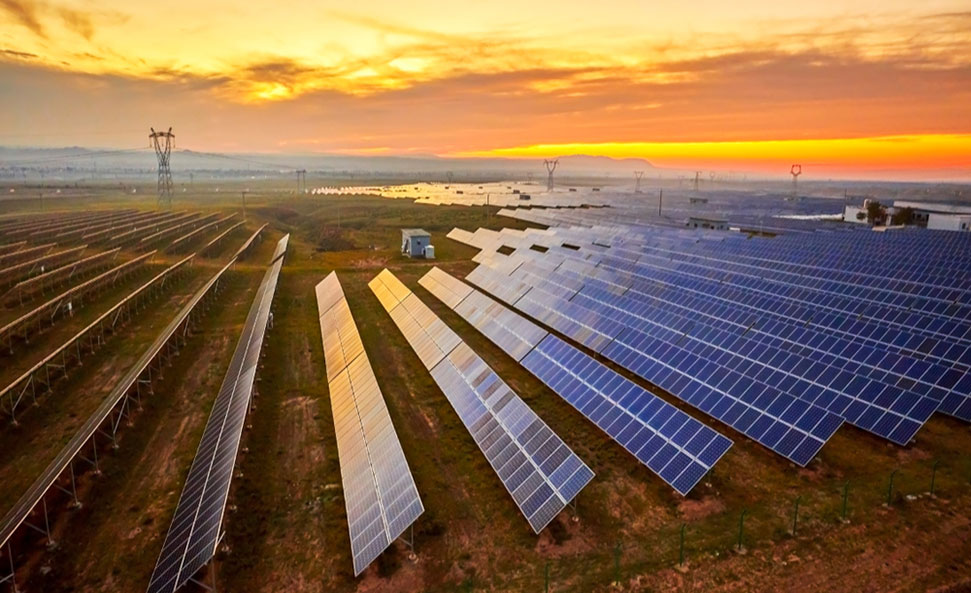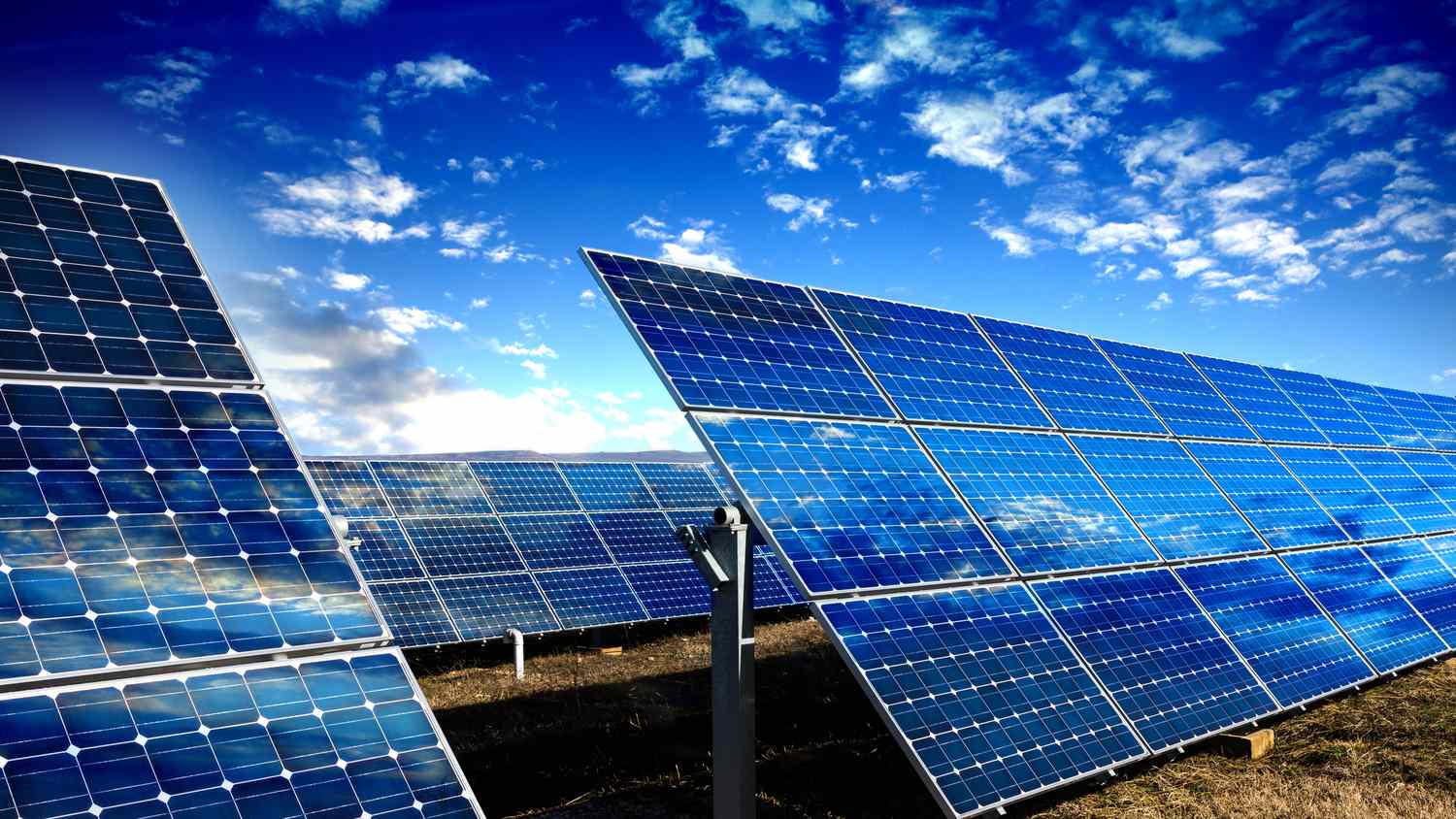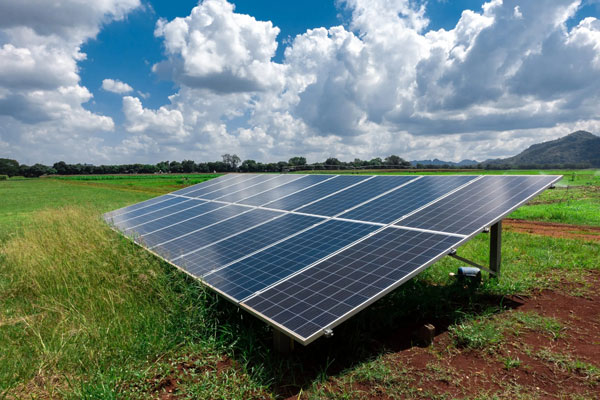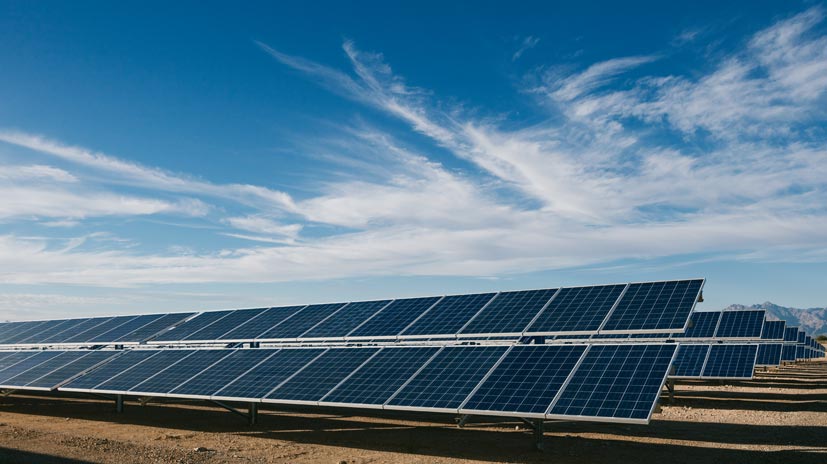Addressing The Variability Of Solar Power
Solar power variability comes from the fact that, as an intermittent energy source, it relies on weather conditions and daylight availability. To put solar into the main power grid, it needs to be managed, which is what the bigger brothers are doing.
Solar Output Forecasting with Predictive Analytics
Using predictive analytics can reduce the impact of solar variability by a large amount. The use of historical weather data and up-to-date atmospheric conditions can help energy companies predict the output for solar energy. Corporations similar to California ISO use machine learning algorithms to forecast photo voltaic era and optimize the way in which the grid is run. Its models pull from satellite imagery, weather-station data and generation statistics collected over the years, to allow grid operators to see the power coming and make their systems more responsive to changes in solar output.
Energy Storage Solutions
It is important to note that energy storage is key to fill the gaps of solar power generation. And by saving surplus energy generated when the sun is at its peak, it can be used later, when there's cloud cover or at night. In Australia, Tesla Powerpack batteries store solar energy at the Hornsdale Power Reserve. This has not only helped to firm-up the local grid, but also cut the reliance on backup diesel generators and demonstrate a real-world example of how storage can improve solar power resilience.
Grid Integration Techniques
Variability of solar power is also being tackled by developments in grid technology. The networks that are smart and have advanced metering infrastructure and dynamic switching are helpful in reducing the fluctuations of solar PV power. These grids utilize real-time data to deliver load balancing immediately and efficiently redirect power from solar arrays to higher loads. They to deploy distributed energy resource management systems (DERMS) can enable increased control over distributed assets (e.g. rooftop solar panels) that provide much needed stabilization in the overall energy supply.
Demand Response Programs
Consumers can be encouraged to eat up less power during times when solar generation isn't great, through the use of demand response programs. Con Edison in New York has implemented demand response programs targeted at industrial and large commercial users to help them reduce energy consumption during peak periods. Energy consumers participating in these programs are financially rewarded, helping not only balance the grid, but also adopt energy conservation among larger energy users.
Development of Hybrid Systems
Using solar energy with other sources of renewable energy decreases reliance on one power source and provides more consistent energy availability. Since the availability of solar power to a great extent during the hours of peak demand; solar from 7am to7 pm and wind biomass farms for the remainder of the day, combined with the ability of wind and hydro power to displace the solar power facilities; the integration is helped by the combination of different forms of energy, including biomass, wind farms, and hydraulic with solar. Say in parts of the world where it is just not very windy when the sun shines, and then the wind picks up at nice and dark. A solar-wind hybrid will give a smoother energy output. This is the approach being used in projects such as the King Island Renewable Energy Integration Project in Australia which is showing some innovative steps forward for energy reliability and reduced (or nil) fossil fuel dependency.
Scaling Up Solar Capacities to Meet Demand
Expanding solar capacities so that they could satisfy our increasing need for non-polluting sources of energy is faced with significant technical, financial and regulatory difficulties. Meeting these constraints requires creative means on-the-ground implementation of solar systems that illustrate under real-world conditions the feasibility and benefits of larger solar systems.
Efficiently scaling up solar farms
Good land use practices are paramount to growing solar farms. There are a range of companies that have made strides in developing thin-film solar, but First Solar has somewhat dominated the market here, producing thin-film solar panels that use only a fraction of the space required for silicon panels of similar efficiency. This has enabled them to generate more energy per unit area, which is particularly desirable in large installations. Another example is the 550 MW Topaz Solar Farm in California spanning 9.5 square miles, showcasing how efficient use of space can serve energy needs.
Enhancing Panel Efficiency
Increasing the efficiency of solar panels is another critical element of scaling up solar capacities. Scientists at the National Renewable Energy Laboratory (NREL) have created a solar cell with an efficiency of 39.5% under concentrated light, setting a new world record for solar cell efficiency. This energy saving is then expected to be converted to less number of panels to generate same watt of power and hence lower costs and area. Adoption of these high-efficiency panels in places such as the Mojave Desert could potentially power thousands of homes with a small footprint.
Urban Accessibility Integration
Solar is not solely a technology for the great outback or remote areas, but also for integration with the urban fabric. New architectural works appear to implement photovoltaic in the design of new buildings, either integrated into more original possibilities, such as tiles, shingles, or through solar panels — specifically BIPV (building-integrated photovoltaics). Take the Salesforce Tower in San Francisco for instance — not only is this building topped with integrated solar panels to offset some of the building's energy use, they also add to the decorative and sustainability story surrounding the building.
Utilizing Community Solar
But community solar projects makes that same energy available to those who may not be able to have private systems of their own. These are projects that involve building a single solar array in a central location, and community members can often subscribe to the electricity that the array generates, effectively paying for solar electricity without installing solar panels on their own properties. For example, the Shiloh Temple in Minneapolis is home to a community solar garden that, according to the Star-Tribune, powers about 200 nearby homes, proving that that this model can work in practice and be expanded.
Simplification of Regulation and Permitting
It is necessary to streamline regulation and permitting in order to scale up solar technologies faster. These simplified processes will reduce the amount of time and money you have to spend on getting the prestressed panels installed. It also implements programs, the Solar Automated Permit Processing (SolarAPP+) initiative by the U.S. Department of Energy that helps streamline the permitting process for residential solar installations to minimize bureaucratic delays and encourage solar capacity to scale upas soon as possible.

Technological Innovations to Improve Grid Integration
With solar energy increasingly being included in the global energy mix, new technology allowing for seamless adoption with existing power grids is changing the game. This technology not only helps mitigate solar power variability, but also helps keep the grid stable and reliable as well.
Advanced Inverter Technology
Advanced inverters are critical for improved integration of solar power into the grid. This allows the devices to modulate the voltage and frequency of the output power from solar panels to match the grid requirements. New models may adjust the voltage supplied to the power lines in real time, respect the frequency or even participate in the communication with the system operators. This is exactly what was successful in California, where advanced inverter functions helped the grid remain stable by providing reactive power when necessary, particularly during hours of the day with high amounts of solar output.
Solar Plus Storage Systems
This can become a game-changer for grid stability when combined with battery storage systems. Solar plus storage systems can save solar energy generated during the peak hours of sunlight while releasing it during peak energy usage times or after sundown. In Hawaii the Kauai Island Utility Cooperative has added solar plus storage that hits 90% of the island's eveing peak and it also provides power after dark and makes the grid more stable by providing reliable power when diesel generators are breaking down.
Demand Response Management
Demand response management systems (DRMS) are needed in order to properly match consumer use of energy supply with the availability of solar energy. These are systems aimed at moving large consumer appliances to power usages based on actual supply (solar provision of power), that either incentivise or remotely manage the use of appliances. A Texas program uses smart thermostats to cut the power draw of air conditioning during periods when solar generation is low, helping balance supply and demand without sacrificing comfort.
AI Analytics and Live Data
Grid Integration: Real-time data processing and AI analytics are very essential for Grid integration as this is the backbone in building the Smart Grid System. These tools make real-time predictions of solar output and grid demand seconds in advance, thus enabling near- instant response. In Australia the Australian Energy Market Operator (AEMO) leveraged AI to forecast solar generation and grid perturbations, allowing them to response to changes in solar production quickly and uphold grid reliability.
Energy Transfer Volumes on the Blockchain
If you are a producer, you can trade those electricity also via a strong blockchain technology without any ICO afterwards having contract and settlement issues. Blockchain is also supportive of peer-to-peer energy trading platforms being established where if you have excess solar energy to sell, you can do so directly with neighbors instead of passing through the conventional grid, thus optimising solar energy distribution. In New York, one Brooklyn project Brooklyn Microgrid is a project that allows local residents with solar panels to sell power directly to their neighbors, providing an interesting angle on how a local community could re-distribute the power generated from solar.
Economic and Policy Barriers to Large-Scale Adoption
Despite huge development in various regions of the globe; advancement of solar energy is obstructed by a variety of economic and policy related barriers. These challenges need to be understood and tackled to hasten the shift to a solar-powered future.
High Initial Investment Costs
Solar power infrastructure costs for high initial investment can be a barrier. Though the price of solar panels has dropped dramatically, the other costs for installation, including inverters, mounting systems and grid integration, are still significant. After using subsidies, the median cost to install a U.S. home solar system might be above $15,000. The policies such as the federal Investment Tax Credit (ITC), which provides a 26% tax credit to solar installations, are designed to reduce these upfront costs and make it easier for homeowners and companies to invest in solar energy.
Government Policies are Untidy
Differing regional governmental policies can lead to that uncertainty for investors and specific companies who may focus solely on solar. Policy backdrop changes, a sudden cut in feed-in tariffs alone or any alteration of net metering laws, have Juncture defining implications on the financial viability of current and potential solar projects. Spain saw a precipitous drop in solar installations after policy was yanked out from under the industry in 2013, signaling just how sensitive the solar sector can be to government policy.
Utility Rate Structures
But they said utility rate structures often do not make it economically favorable for decentralized generation, such as solar. Most utilities either pay solar panel owners the retail power rate or purchase solar power (at the TOU rate) at an unsatisfactory price. These demand charges (or fixed grid fees) can have the effect of reducing the financial incentive to install solar. One of the most notable changes to net metering rules has been in Arizona, where solar users are now being charged demand based charges, a move that could very well change the economics of solar adoption for homeowners there.
Access to Financing
One of those barriers is that of access to financing, particularly in the developing world. Solar projects, lacking the traditional revenue tracks that financial institutions rely on in areas where renewable energy markets haven't yet developed, are generally seen as high-risk investments. Solar leasing and power purchase agreements (PPAs) are a few of the innovative financing models that have succeeded in the United States and Europe, but remain relatively nascent in many emerging markets. These models bring down the costs of installing solar panels by reducing the upfront price consumers have to pay and letting them finance the system over time with the money saved from the rebate.
Competition from Fossil Fuels
This is despite continued widespread long-term subsidy to fossile fuelstrfs which provides significant cross sectoral competition to geothermal energy. Most states also continue to offer large subsidies to fossil fuels, which makes them spend a lower-priced vitality determinative as compared to renewables. As a kicker, global fossil fuel subsidies in 2017 were as high as $5.2 trillion according to the International Monetary Fund (IMF). More importantly, reducing these subsidies serves to even the playing field, which will be critical to solar power becoming competitive and compelling for deployments on this scale.

Collaborations and Partnerships for Scaling Solar Projects
Without them, you cannot really imagine to overcome the hurdles in scaling solar energy projects. Solar for better agreements — these collaborations raise prosperity and combine to encourage the expansion, distribution and sustainability of solar power products
Tech Companies/Energy Companies Joint Venture
Solar technology advancement and deployment in the energy sector is deeply tied up with joint ventures between Solar PV technology companies (solar cell and module manufacture) and energy companies (developers and plant owners). One example: the Google-SunPower partnership, in which Google's technological and financial expertise is paired with SunPower's experience in making and installing solar panels. Collectively, they have unlocked residential solar projects with financing that empowers homeowners to switch to solar.
Solar Technology Collaboration Annex
Global cooperation is needed to speed up the scale and vision by which solar is developed and deployed in order to lower its cost. The International Solar Alliance (ISA) led by India and France is a case in point. It brings over 120 countries to collaborate on the deployment of solar resources through the policy support, new collaborations, projects development, increased capacity, joint technology and market solutioning, and unprecedented mobilization of public and private investment. This coalition helps nations in the tropics that receive abundant sunlight yet often have inadequate resources to exploit this.
Public-Private Partnerships
Enter public-private partnerships (PPPs), which are consider critical for funding big solar in jurisdictions where private sector investment is too risky or not profitable enough. One popular examples is the Noor Ouarzazate Solar Complex in Morocco one of the largest solar plants in the world. The project was funded jointly by the Moroccan government and a consortium of private companies with support from the World Bank and the African Development Bank.
Research & Development Collaboration
Research and development collaboration aims to advance solar technologies that lower costs, raise efficiencies New technologies are often pioneered by universities and research institutes working with solar companies. Work done as a collaboration between MIT and Italy's Eni energy company has produced a new type of solar photovoltaic material that could turn solar panels of the future into significantly more efficient devices than they are today.
Integrated Models with Cross-Sector Alliances
Domain-specific coalitions linking together solar with either niches or integrating the technology into a cross-sectional or gender-specific manner within diverse energy systems are essential for this scale of deployment. Such alliances also extend into other areas of the automotive sphere, encompassing battery manufacturers and other utilities. This is a significant development in Tesla's plunge into the solar energy, energy storage, and electric vehicle sectors in terms of developing the ability to produce solar cells and modules through its partnership with Panasonic at its Gigafactory new Buffalo, New York.





